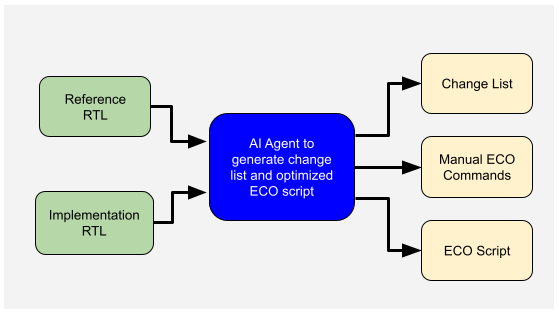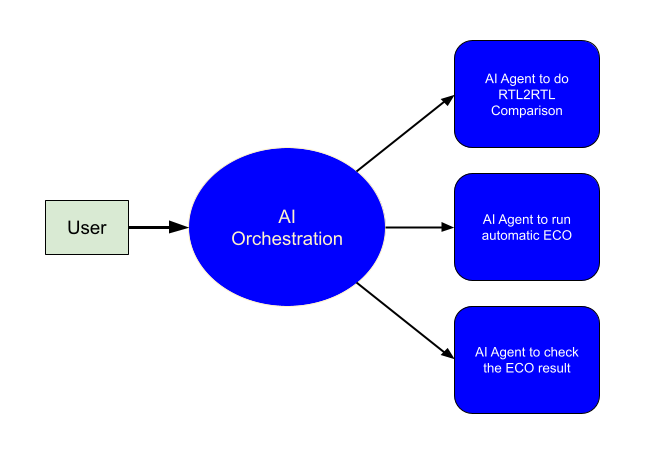In traditional netlist ECO processes commonly used in IC design workflows, various teams collaborate, including RTL designers, Design Verification (DV) engineers, and ECO engineers. When a bug is detected during the DV phase, RTL designers create an updated Reference RTL, which is then resynthesized into the Reference netlist. These updates, along with the original RTL and netlists, are passed on to ECO engineers for further processing.
ECO engineers often face tight schedules and limited information about the change list, making it challenging to analyze updates comprehensively. They typically rely on automatic ECO flows to process the netlists. However, the lack of visibility into the quality of the ECO results can adversely affect the efficiency of the ECO process. Simple manual adjustments could significantly enhance the quality of the automated ECO output. For more details on how combining manual and automatic ECO can reduce scope and improve quality, refer to this article: Reducing ECO Scope by Combining Manual ECOs. https://nandigits.co/gof_display_doc.php?document_type=functional_eco_fix_scope
To address these challenges, an AI agent-based approach is introduced. This AI agent performs a detailed comparison between two RTL files—Reference RTL and Implementation RTL—to identify and analyze differences. Based on the comparison, the agent generates the following outputs:

Figure 1: RTL-to-RTL comparison with AI agent
The generated change list serves as a high-level guide for ECO engineers, highlighting key differences between the Reference and Implementation RTLs. This guidance enables engineers to focus on critical areas, enhancing efficiency during the ECO process. Furthermore, the change list can be used post-ECO to validate the outcome against the report, ensuring no unintended changes were introduced.
The AI agent generates manual ECO commands to address simple yet critical modifications in the Implementation netlist. Examples include tasks such as fixing boundary tie-offs, which might be minor but essential. By incorporating these manual adjustments, the scope of the automatic ECO process can be narrowed, resulting in faster execution, reduced computational load, and smaller patches.
The AI-generated ECO script integrates both manual ECO commands and automatic ECO workflows. While ECO engineers may need to review and fine-tune the script before execution, this automation significantly reduces the manual effort required to draft ECO scripts. This streamlined process boosts productivity and ensures a more efficient ECO operation.
The AI-driven ECO process has the potential to be further refined with additional AI agents and a centralized orchestrator:

Figure 2: AI agents and orchestrator for ECO process
Leveraging an AI agent to compare Reference RTL and Implementation RTL files provides ECO engineers with a structured change list, manual ECO commands, and a fully integrated ECO script. This approach significantly enhances the efficiency and quality of the ECO process. Future developments, such as introducing additional AI agents and orchestrators, promise to fully automate the ECO workflow, driving further productivity gains and ensuring robust process outcomes.